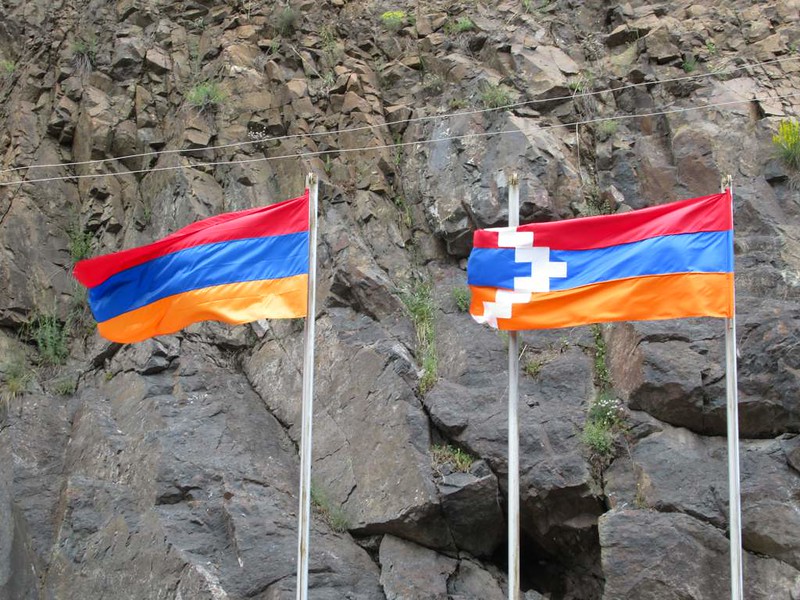Turkey-backed Azerbaijan and Russia’s ally Armenia are fighting a proxy war over the control of the disputed region of Nagorno-Karabakh, also known as Artsakh. Fierce clashes broke out on September 27 early in the morning and dozens of civilians and troops on both sides have already been killed. What could be the outcome of the conflict that threatens to destabilize the Caucasus?
So far, the main hostilities have been localized on the territory of Nagorno-Karabakh – a region of Azerbaijan that has been under the control of ethnic Armenian forces backed by Yerevan since the conclusion of war in 1994. There are fears that the conflict could spill into Armenia or into Azerbaijan’s exclave of Nakhichevan. Any escalation would create a serious threat for pipelines that carry oil and natural gas from the Caspian Sea through Georgia into Turkey.
Although none of the key pipelines are located in Artsakh itself, in case the Azeri forces manage to capture the region, Armenia can attack Azerbaijan’s Tovuz district, located nearly 200 kilometres north of Nagorno-Karabakh, and put under threat major energy corridors taking oil and gas from the Caspian Sea to global markets. Such an option, at least at this point, is not very likely as Armenia-sponsored Artsakh forces still firmly hold their positions. In addition, it is unlikely that Russia would approve such an escalation of the conflict. Armenia is a member of the Russia-led Collective Security Treaty Organization (CSTO), which means that Moscow would have to defend its ally if it was attacked by Azerbaijan.
However, the Kremlin is trying to portray itself as a regional arbiter, rather than a side that is directly involved in the war. It is no secret that Russia has been selling arms to both Azerbaijan and Armenia for years, and given that the trade turnover between Moscow and Baku reached $3 billion in 2019, the Kremlin certainly has no interests in worsening its relations with Azerbaijan. On the other hand, if it does not provide direct military assistance to its formal ally, the very existence of the CSTO could become questionable, as Russia would prove to be a completely unreliable partner. Also, if the Azeri army manages to capture Nagorno-Karabah, such an action will be interpreted not just as an Armenian loss, but also as another Russia’s geopolitical humiliation. That is why preserving the status quo in the turbulent region is the Kremlin’s top priority.
It is worth noting that neither Moscow nor Yerevan ever officially recognized the self-proclaimed Republic of Artsakh, which means that the Kremlin has no formal reasons to defend Armenia, as it has never been attacked. In an effort to avoid Russia’s direct involvement, Turkey-backed Azerbaijan started its military offensive against Armenia-sponsored Artsakh, not against Armenia itself. Turkey, on the other hand, clearly demonstrated its willingness to assist Azerbaijan in this conflict. During the summer, Ankara reportedly supplied Baku with drones, various weapons and ammunition. There are also reports that Turkey transferred its proxy militants from Syria and Libya to Azerbaijan, which suggests that Turkish leadership takes this war very seriously. Still, after the most recent escalation in Nagorno-Karabakh, Turkish lira hit an all-time low against the US dollar, and Saudi Arabia announced embargo on all Turkish products. All that, however, will unlikely have an impact on Ankara’s decision to fully support its most loyal ally in the Caucasus, even if that means a direct war between Azerbaijan and Armenia.
Right after the clashes in Artsakh started, Azerbaijan accused Armenia of ceasefire violations and shelling, which apparently led to the Azeri “counter-offensive”. In other words, Baku is most likely using this narrative as a pretext for the planned offensive, which has been prepared in recent weeks with the help of Turkey. On the other hand, just a day before the conflict erupted, Russia finished its Kavkaz 2020 military drills where up to 1,000 servicemen from Armenia, Belarus, China, Myanmar and Pakistan were invited to practice joint actions, while the Iranian military vessels were expected to join naval exercises. Representatives from Azerbaijan, Kazakhstan, Tajikistan, Indonesia, Iran and Sri Lanka reportedly participated as observers. In other words, the conflict is unlikely to have broken out spontaneously, and Turkey and Russia, as the main sponsors of the two warring parties, will undoubtedly try to make lucrative deals over this matter, as they already do in Syria and Libya.
In the meantime, the Azeri forces are expected to attempt to capture if not the whole territory of Nagorno-Karabakh, then at least significant parts of the region. Given that the Armenians completed all of their military-political tasks back in 1990s during the war in which they managed to establish full control over Artsakh, the initiative will unquestionably be on the Azeri side. As long as the conflict remains within the borders of the disputed region, foreign actors will unlikely directly interfere, although Russia and Turkey, as the major actors in the Caucasus, will keep providing their proxies with arms and ammunition.
Image credit: David Stanley

